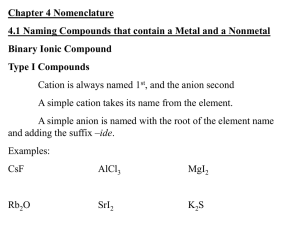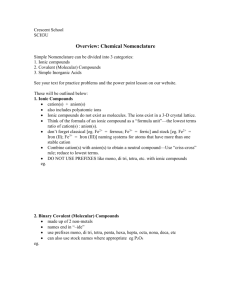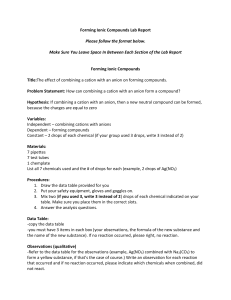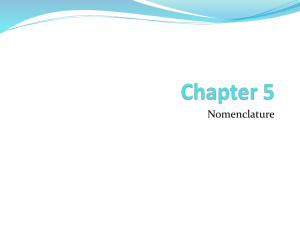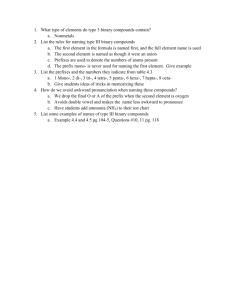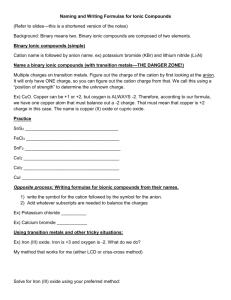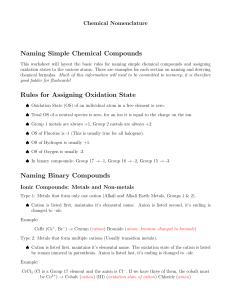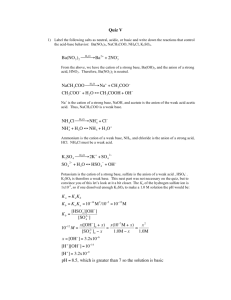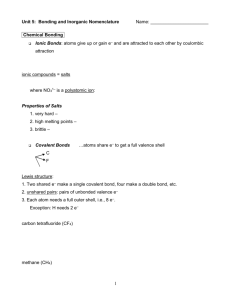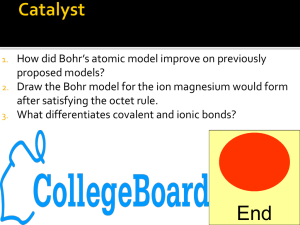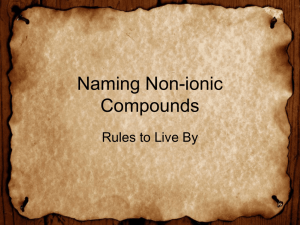Inorganic_Nomenclature
advertisement
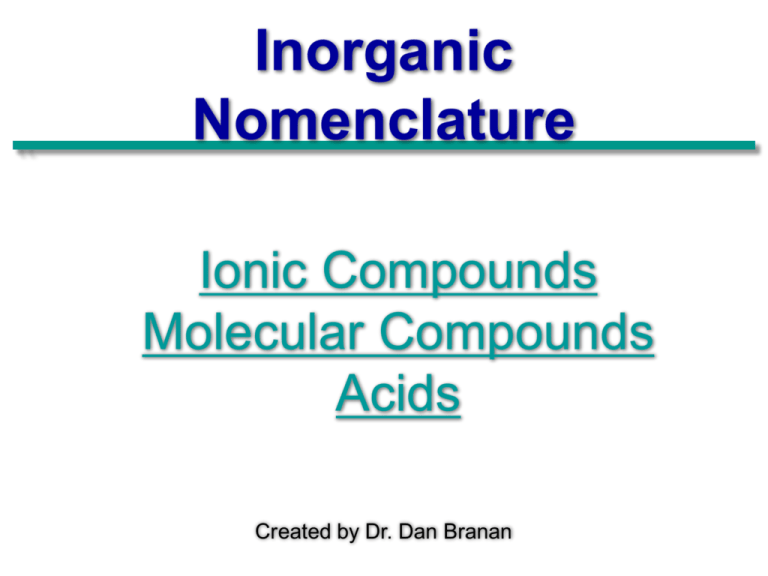
Inorganic Nomenclature Ionic Compounds Molecular Compounds Acids Created by Dr. Dan Branan Naming Ionic Compounds Put the positive ion (cation) on the left and the negative ion (anion) on the right: 1. o For example: LiCl Name the compound from left to right, using the full name of the thing on the left and a 2. modified name of the thing on the right. If the anion (or more electronegative element) is all by itself, then its name ends with “-ide.” o For example: Lithium Chloride If the anion is a compound ion (like sulfate or perchlorate) then just name it. 3. o For example: Li2SO4 is “Lithium Sulfate” If the cation has a only a single oxidation state (like silver, which only occurs as Ag+, or 4. the first and second column metals, which are always +1 or +2 ions), then you are finished. If the cation has several possible oxidation states (like iron, which can be +2 or +3), 5. then indicate the CHARGE on it with a Roman numeral. o For example: FeCO3 is “Iron (II) carbonate”, but Fe2(CO3)3 is “Iron (III) carbonate” NEXT: Naming Molecular Compounds Slide 2 of 5 Naming Molecular Compounds 1. Put the least electronegative atom (“more cation-like”) on the left: o For example: PBr3 or CO or N2O4 2. Name the compound from left to right, using the full name of the thing on the left and a modified name of the thing on the right. If the more electronegative element is all by itself, then its name ends with “-ide.” Indicate how many of each atom there are with Greek prefixes. o For example: Phosphorous Tribromide, or Carbon Monoxide, or Dinitrogen Tetroxide 3. o EXCEPTION: No need to use “mon-” or “mono-“ when there is only one atom on the left. NEXT: Greek Prefix Chart Slide 3 of 5 Greek Prefixes Prefix Means… Prefix Means… Mono One Hexa Six Di Two Hepta Seven Tri Three Octa Eight Tetra Four Nona Nine Penta Five Deca Ten Next: Acids Slide 4 of 5 Inorganic Acids 1. First, name them as covalent inorganic compounds. Then, find their acid name: 2. Determine the ending of the anion. a.) If the anion ends in –ide, the acid is named hydro root -ic acid. o HCl (g) is Hydrogen chloride (“chlor” is the root of the name) o HCl (aq) is hydrochloric acid b.) If the anion ends in –ate, drop –ate and add –ic acid to the name. o CO32- is carbonate; H2CO3(aq) is carbonic acid c.) If the anion ends in –ite, drop the –ite and add –ous acid o ClO2- is chlorite; HClO2(aq) is chlorous acid Return to Menu Slide 5 of 5
